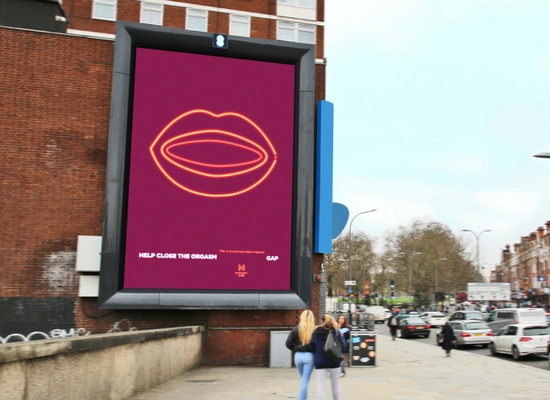
MysteryVibe Aims to 'Close The Orgasm Gap'

While the gender pay gap has sparked international debate, there’s another gap that few are talking about … the orgasm gap.
Leading studies and research show that among heterosexual couples, men have 3 orgasms for every 1 orgasm a woman enjoys.
That’s 200% more, or a gap of 50%, equivalent to some of the worst pay gap figures released by firms in the UK last week, and is over double the UK average pay gap. Making it one of the greatest gender inequalities our society faces.

It’s for this very reason that MysteryVibe, the luxury brand behind the world’s first body-adaptable smart vibrator, Crescendo, has launched a campaign to educate couples on the orgasm gap and how to close it. By practising more pleasurable sex for both, couples can develop more equitable, and more enjoyable, sexual relationships.

The campaign has launched as a series of three posters, each illustrating research on why the gap exists:
‘Vulva Maze’ — in a recent study, 25% of men were unable to even identify the clitoris, the centre of female pleasure, and only just over half could identify the vulva (61%). With only 25% of women able to orgasm from penetration alone, this lack of pleasure knowledge is detrimental to healthy relationships. Sex education preaches reproduction rather than pleasure, which inherently favours the easier-to-attain male orgasm. By highlighting the lack of knowledge in a playful way, MysteryVibe hopes to encourage more partners to focus on the clitoris, helping to close the orgasm gap.
‘Fake Lips’ highlights the fact that 76% of women admitted to having faked at least one orgasm. Sexuality journalist and researcher Peggy Orenstein says that “by faking an orgasm women are denying themselves the sexual satisfaction they deserve,” making men think they have satisfied their female partner through penetration alone, which we know is only true for 25% of women. Orenstein found that 60% of girls see male orgasms as the primary focus, and ‘faking it’ becomes a way to please him, while robbing themselves of pleasure in the process.
‘Self-Love’ exemplifies the fact that only 38% of women regularly masturbate, while male masturbation is reported at around 96%. MysteryVibe’s own UK study in 2017 found that men masturbate twice as much on average than women.Since self-pleasure is a leading driver of sexual knowledge for women, that gap in experience and confidence also drives the orgasm gap. With the campaign, MysteryVibe hopes to get people to talk more openly about female masturbation, so that it becomes as socially acceptable as it is with men.
Stephanie Alys, MysteryVibe Co-Founder & Chief Pleasure Officer, said “When it comes to the orgasm gap, there’s a lot of work to be done — not just in raising awareness, but in exploring the reasons why it’s so hard for women to demand orgasms during sexual relationships.”
MysteryVibe is committed to using their technology, products and educational communications to help couples enjoy more pleasurable sex, and bridge the orgasm gap.
View their microsite here https://www.closetheorgasmgap.com
Rob Doubal, Co-President and Chief Creative Officer at McCann London said: “Talk is rife at the moment about gender gaps, so MysteryVibe’s timing is spot on in sending a powerful message about achieving equality in the bedroom for heterosexual couples. This campaign is one of a kind that will contribute in a major way to ending the taboo subject of the gender orgasm gap".












